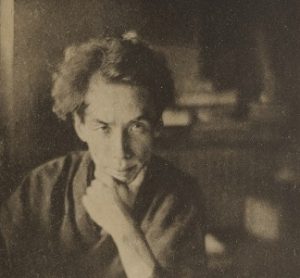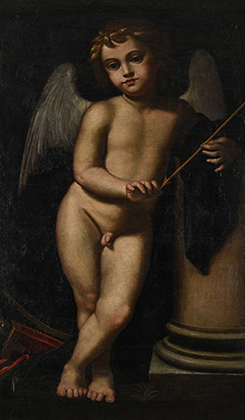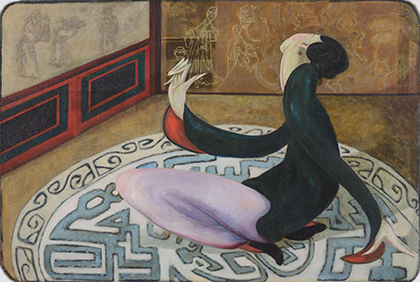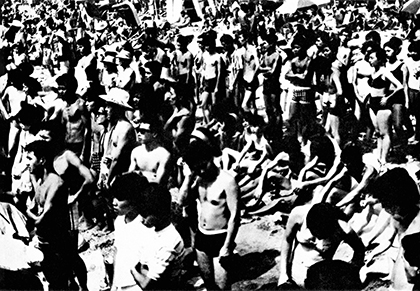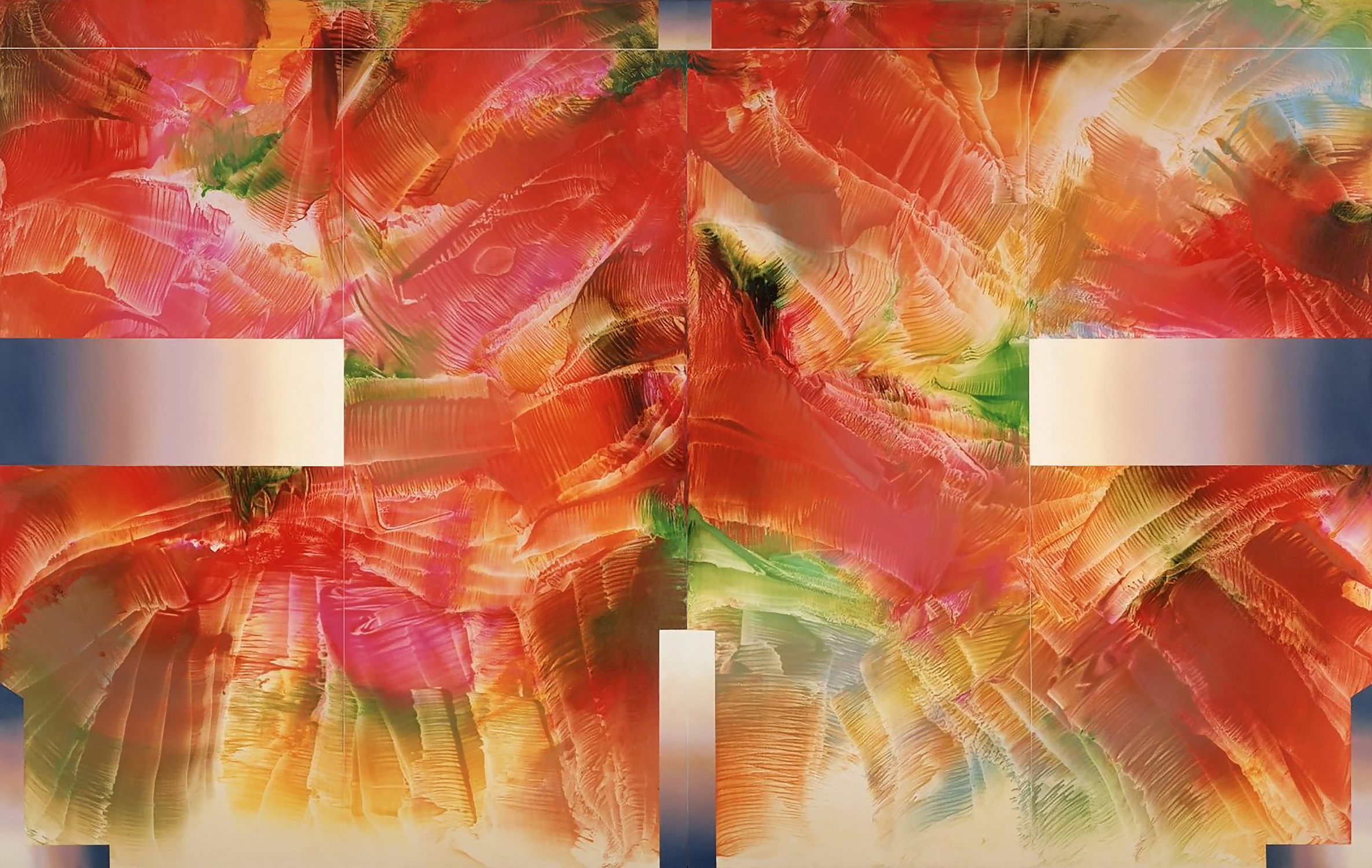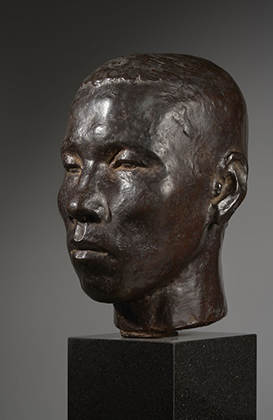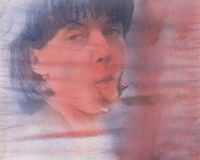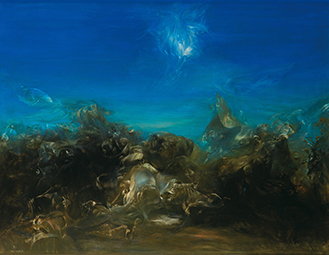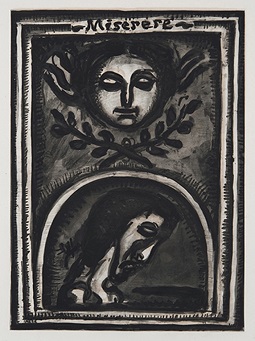Exhibitions
HAYAMA 2023
AKUTAGAWA Ryunosuke and His Aesthetics, Two Forerunners—NATSUME Soseki and SUGA Torao
Novelist Akutagawa Ryunosuke (1892–1927) is still admired by generations today. In his works and letters, Akutagawa often refers to art, and Natsume Soseki (1867–1916), whom he admired as a mentor, shared his interest in literature and art. Suga Torao (1864–1943), Akutagawa's German teacher at Ichiko High School, introduced the concepts of Zen to Soseki. By focusing on the relationship between Akutagawa, Soseki, and Suga, this exhibition presents the literary world of Akutagawa and his eye toward the world of aesthetics.
Image: The Complete Works of Akutagawa Ryunosuke, 1927, Shinchosha
Mokumo Sensei and Cupid: AOKI Shigeru Library
From the Museum Collection
Calling himself a bibliophile and a lover of smoking, art historian Aoki Shigeru (1932–2021), a.k.a. "Mokumo Sensei," was a leading researcher of the Late-Edo Western-style painter Takahashi Yuichi (1828–1894). His collection of books, "AOKI Shigeru Library," which was acquired by the museum over many years, now numbers 10,000 volumes. In addition to introducing valuable materials from the Meiji period from the "AOKI Shigeru Library," a major asset for future art history research, the exhibition will also feature the restored Cupid (artist unknown), a work formerly owned by Takahashi Yuichi and acquired in 2019, which was identified through Aoki's research, for the first time since its restoration.
Image: Cupid, Artist unknown, Museum collection
The Future 100 Years Ago
Modernists on the Move 1920–1930
Commemorating the 20th Anniversary of The Museum of Modern Art, Hayama
To commemorate the 20th anniversary of our museum in Hayama, we return to the 1920s, a period that saw the diverse development of the "modern" culture that defines the museum's very name. Following the Russian Revolution of the 1910s, World War I, and the Spanish flu pandemic, artists transcended national and international borders through their artistic endeavors. This exhibition will consider various aspects of the newness that the world dreamed of 100 years ago, including the Great Kanto Earthquake of 1923 and the Mobo Moga (Modern Boy and Modern Girl) artists of the resulting recovery period, as well as the emerging art movement during the transition to the Showa era.
Image: Kume Tamijuro, Chinese Dance, c.1920, Eisei Bunko Museum
Provocative Relationship=MORIYAMA Daido×NAKAHIRA Takuma
Having left their mark on the history of Japanese photography, two photographers, Nakahira Takuma (1938–2015) and Moriyama Daido (1938– ), were each other's closest comrade and rival. For the first time, this exhibition will re-examine their photographic expressions developed over a half-century in parallel. Using Hayama as a backdrop, where both photographers frequented in their youth, this exhibition will look back on the photographic work of each period through magazines and other photographic materials to reveal the "provocations" of these two rare photographers, both of whom could be called matchless prodigies in the world of photography in Japan.
Image: Moriyama Daido, Zushi, Kanagawa, 1969, ©Daido Moriyama Photo Foundation
KANO Mitsuo - Rūpa, Light, Fluttering Things
From the Museum Collection
Kano Mitsuo (1933– ) is a self-taught artist who has pursued rich imagery independent of contemporary trends. This exhibition of Kano's prints, which span from the mid-1950s to the 2000s, illustrates the artist's development from his early monochrome etchings to the color prints that emerged from the 1960s onward. Together with his prints, the exhibition will introduce sculptural objects and oil paintings newly donated by the artist. Based on the term "rūpa (color)," we will trace Kano's 70-odd years of creative exploration into his own unique world of color.
Image: Kano Mitsuo, Serpentinata Ⅰ, 2004, Museum collection
Sato Churyo
Rereading Three Masterpieces
Widely known for his sculptures Man of Gunma and Hat, Summer, as well as his long-selling picture book The Gigantic Turnip, Sato Churyo (1912–2011) left a significant mark on the history of post-war Japanese sculpture. How did these sculptures come into being? This exhibition traces the path of Sato's work, drawing on his lifelong collection of works by Auguste Rodin (1840–1917), Marino Marini (1901–1980), Ben Shahn (1898–1969), and others to explore the secrets of his creativity.
Image: Sato Churyo, Man of Gunma, 1952, The Miyagi Museum of Art. photo:©Sasaki Kyosuke
Unseen Objects & Desire to See
Commemorating Donation from NOZAKI Michio to the Museum
Mr. Nozaki Michio (1931– ) donated more than 150 pieces of contemporary art, mainly by Gerhard Richter (1932– ), to the museum last year. In the 1980s, while working as an ophthalmologist, Mr. Nozaki developed an appreciation for modern and contemporary art as evidenced by his collection of artworks and books. In addition to Richter, of whom Mr. Nozaki was particularly fond, this exhibition presents a selection of works by Sigmar Polke (1942–2010), Joseph Beuys (1921–1986), Roy Lichtenstein (1923–1997), and Marcel Duchamp (1887–1968), as well as some of Mr. Nozaki's thoughts on collecting art over the years.
Image: Sigmar Polke, Untitled, 1975, Museum collection (Nozaki Michio Collection)
Yokoo Tatsuhiko
Beyond the Realm of Meditation
The schedule could be changed to prevent the further spreading of COVID-19.We apologize for any inconvenience caused, and seek your kind understanding and cooperation.
YOKOO Tatsuhiko (1928–2015) is a painter who worked coming and going between Japan and Europe. He held his solo exhibition in Switzerland in 1965. From then on, he achieved fame for his visionary paintings inspired by the Bible and mythology. From the 1980s onwards, he set up his base in Germany, where, influenced by Rudolf Steiner (1861-1925) and Zen thought, he incorporated meditation into his work and unfolded abstract paintings alluding to calligraphy. As this artist’s first retrospective in Japan, his artistic career is surveyed mainly through the works which were left in his studio in Japan.
Image: Yokoo Tatsuhiko, Apocalypse: Gog and Magog, 1977, Kitakyushu Municipal Museum of Art
Copper Engravings by Georges Rouault
From the Museum Collection
The schedule could be changed to prevent the further spreading of COVID-19.We apologize for any inconvenience caused, and seek your kind understanding and cooperation.
In conjunction with the retrospective of works by YOKOO Tatsuhiko, introduced here are copper engravings by Georges Rouault (1871–1958), by whom Yokoo was influenced. The profound works produced by repeatedly incising and hatching a copperplate, onto which the image has been photoengraved, are brimming with the deep spirituality with which Rouault pursued depths of the human mind. Shown here are Miserere (1922-27, published in 1948), a series of master monochrome copper engravings inspired by the death of Rouault’s father and World War I, and Passion (1936), which depicts the sufferings of Christ.
Image: Georges Rouault, Miserere, No.1, Miserere mei, Deus, secundum magnam misericordiam tuam., 1923, Museum collection (Mochizuki Tomiaki Collection)


